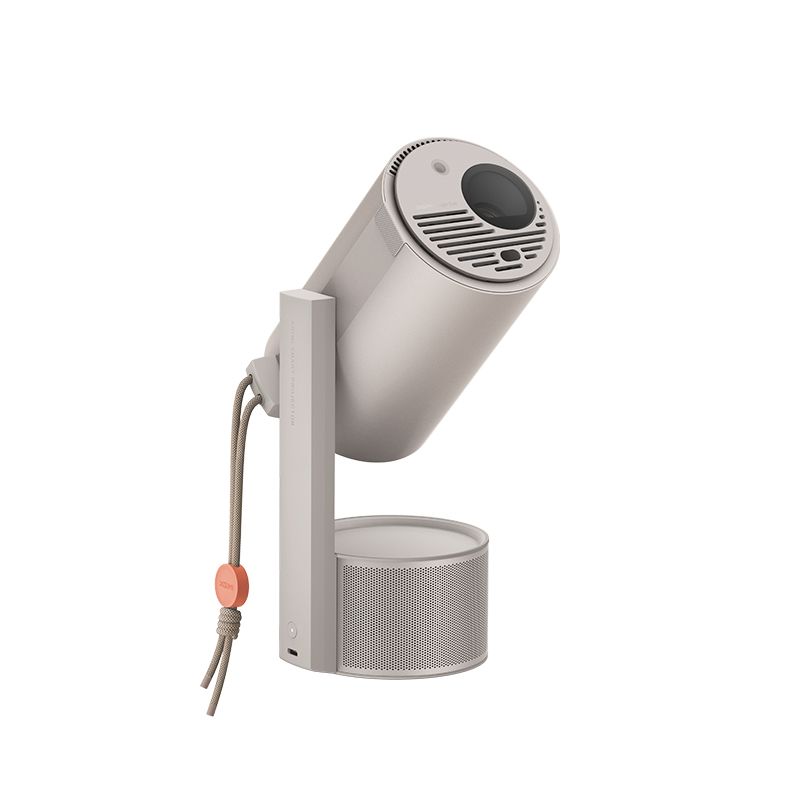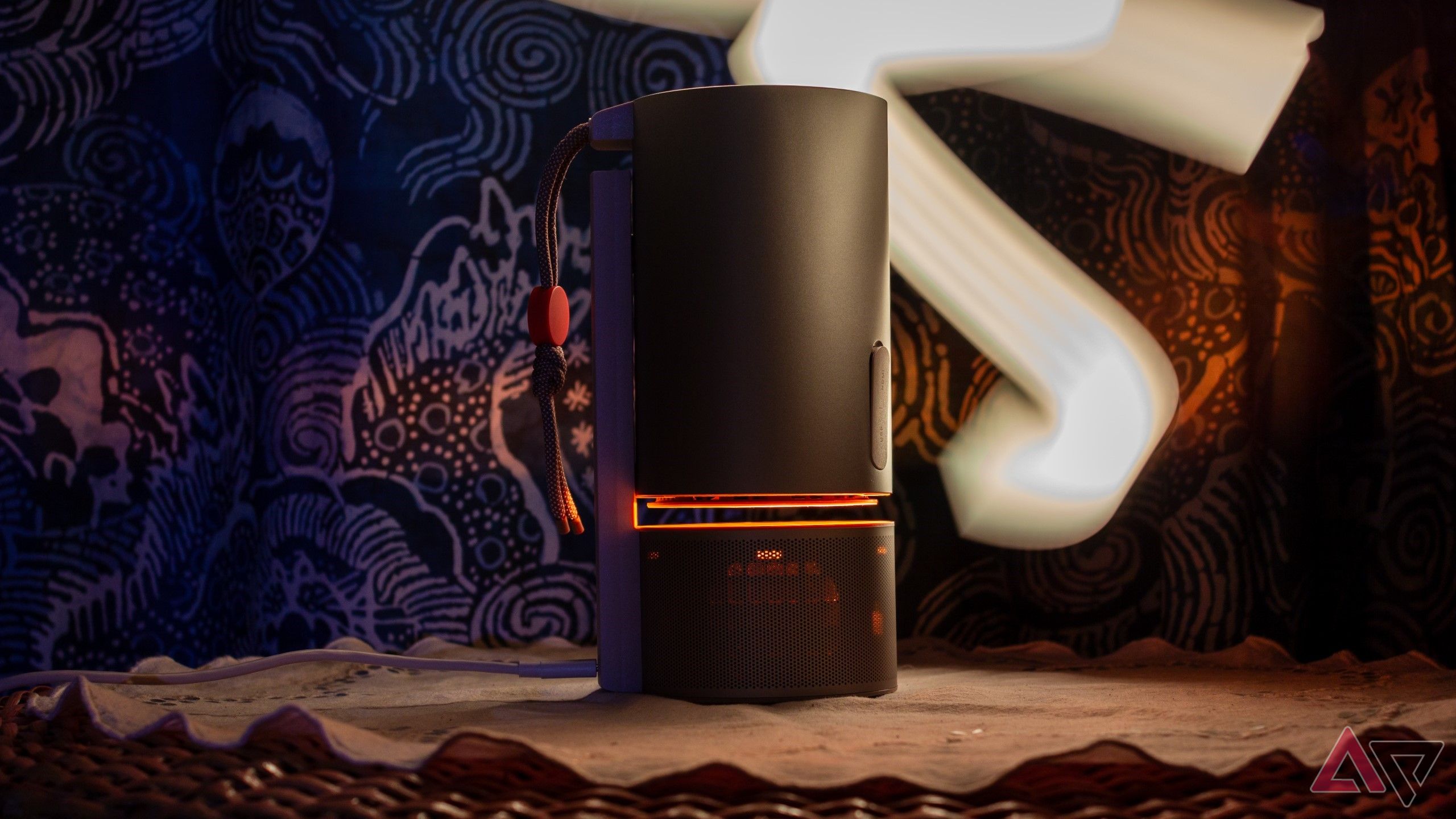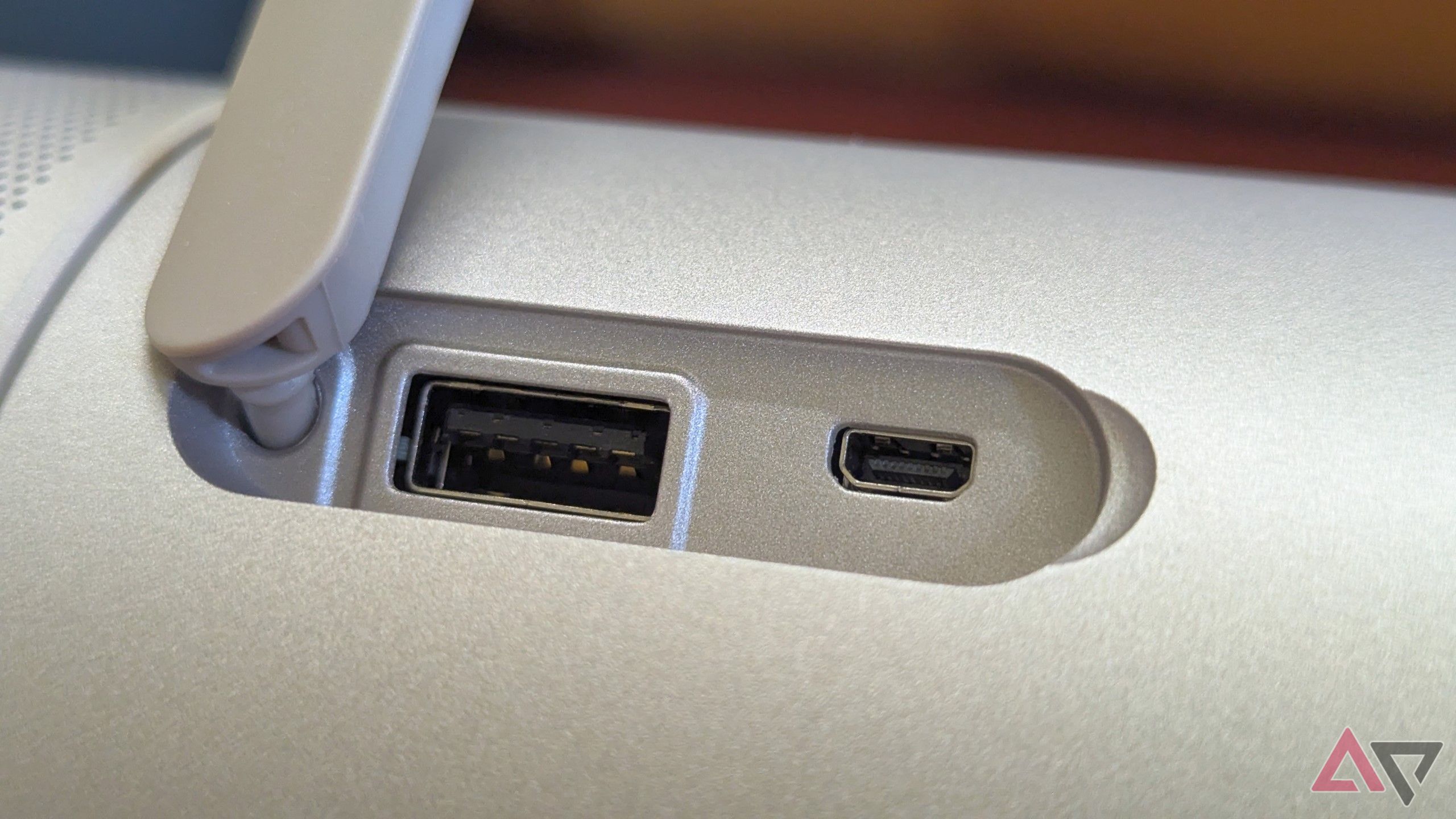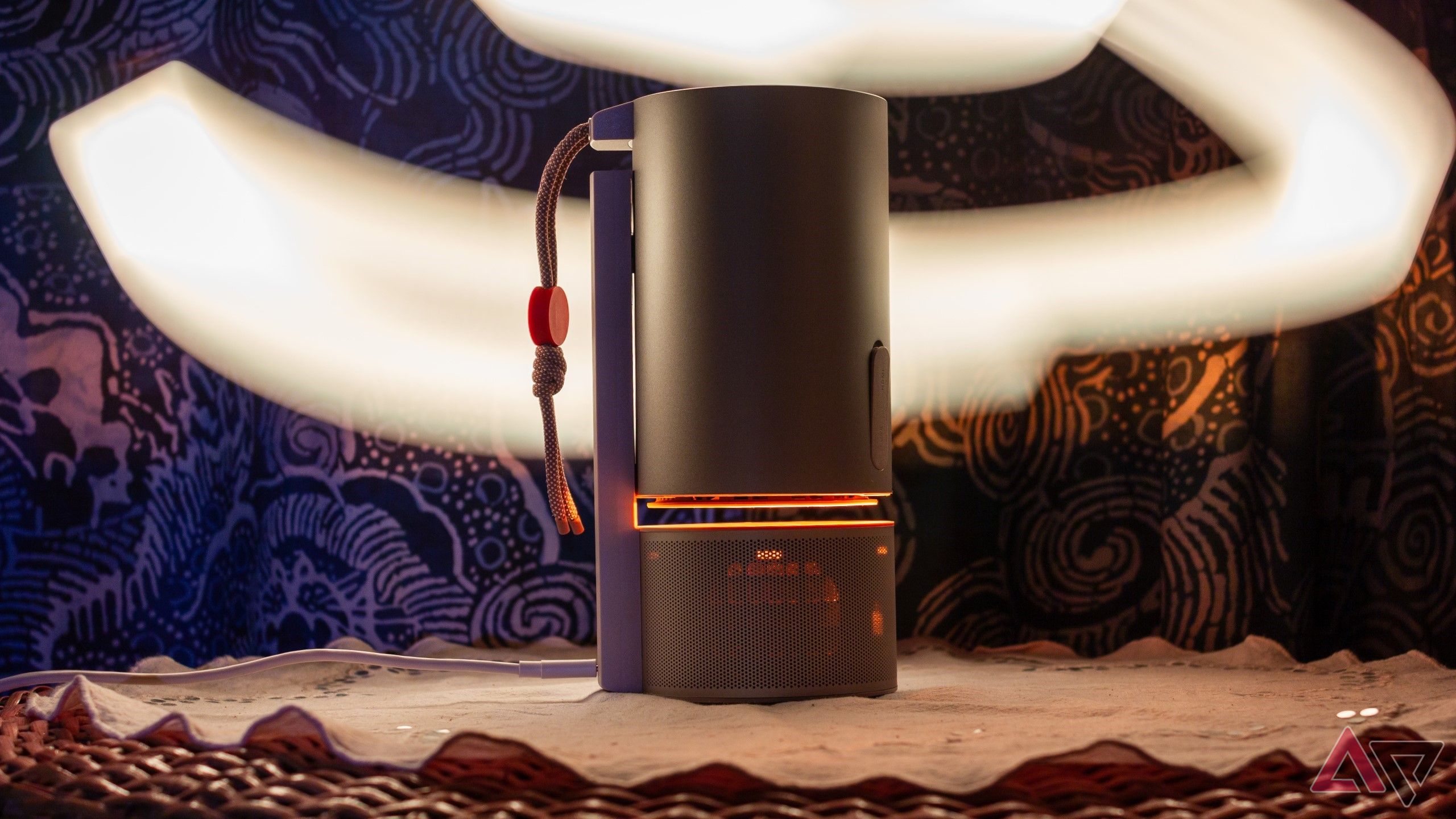Taking your entertainment around is easier than ever with a decent Android tablet, but a properly portable Google TV experience getting easier to come by with the latest crop of portable Android projectors. Xgimi has honed its crafts with its Halo and MoGo series, which have been aided by advancements in optics and now-established LED illumination tech. At IFA this year, the company unveiled the third iteration of the MoGo alongside several other models.
The MoGo 3 Pro has a unique canister-like design compared to its boxy predecessors, boasting LED-lit DLP projection tech and native Netflix support, making it a compelling proposition for a new portable projector under $500. I spent a few weeks with the MoGo 3 Pro prior to its announcement, along with all of its official accessories, to determine if its portability and flexibility is worth the cost.


Xgimi MoGo 3 Pro
The Xgimi MoGo 3 Pro is a portable projector reborn with Google TV and integrated support for Netflix. The design is sheer genius and the materials lend it a premium feel. However, don’t mistake this for a cinema projector that’s just smaller because you’re trading brightness and clarity for the size.
- Incredibly sharp picture
- Customizable remote button
- Native Netflix support
- Lens protection by design
- No internal battery
- Micro HDMI with no adapter supplied
- Wobbly tripod
- Clip-on lens accessory is a gimmick
Pricing and availability
Up and coming
Xgimi’s new portable projector comes in at just $450, surprisingly cheaper than the MoGo 2 Pro before it, undercutting other popular portable projectors like Anker’s Nebula Mars 3. For the price, you get the new projector, a wall adapter, and a remote with removable batteries — all color-matched in a lovely champagne gold color.
For just $50 more, Xgimi also bundles a PowerBase tripod stand. It includes a 20,000mAh battery with USB-C charging and output, making the MoGo 3 Pro truly portable. It uses quarter-inch thread to attach to the projector, just like tripod mounts for cameras, but can be used as a smaller tripod base if you remove the battery tube. This design allows for two height settings on the tripod, but you’ll need a wall adapter with the shorter one.
PowerBase stand accessory
Other optional accessories include a felt-lined synthetic leather carrying case and a clip-on lens for a larger, curved display output. I’m convinced the $500 bundle with the tripod stand offers the best value for money, and the carry case is a great bonus, too. However, the clip-on lens isn’t great — more on that later.
What I like about the Xgimi MoGo 3 Pro
Portable panache
The new MoGo 3 Pro feels well-built and rugged. The plastic and silicone bits are surprisingly color-matched too, with orange accents thrown in for pop. Surface finish and colors are impressively matched across materials, but they may age differently. The front face with the lens looks a little undercooked with all the vent holes, but the backside you’ll stare at the most is clean, with adequate cutouts for ventilation.
And yes, thermal management is fantastic. The attached lanyard doesn’t inspire confidence, but I can only describe the projector’s design as sheer genius because it integrates a lens protector so robust, all other solutions feel like toys in comparison.
The design does the MoGo’s portability wonders — you pull the projector upwards to separate it from the speaker base, and then pivot it to point at a wall. Surprisingly, this arrangement only allows unidirectional 130-degree swivel; watching a film on the ceiling with a 180-degree rotation would have been incredible.
It also uses USB-C for 65W power delivery, but I failed to power it with anything besides the supplied adapter. The remote control continues the beige color scheme, and features the classic MoGo-series diagonal volume switch for sound. The integrated speakers sound fine at moderate volume, but you’re better off connecting a proper sound system through the included Bluetooth connection.
Diving into image quality, I’m thrilled to report it is much better than the average 1080p projector, thanks to an LED lamp assisting standard DLP projection. The resulting image is sharp and contrast-rich, with HDR10 footage looking the part, even when the brightness isn’t maxed out. Fan noise and typical DLP projection artifacts like the screen door effect and color wheel effect are well contained. Xgimi retains the impressive optics of pricier models like the Horizon Pro, ensuring sharp focus and image quality from corner to corner.
Speaking of focus, onboard firmware is optimized for portability with features like motion-triggered automatic keystone, obstacle avoidance, and screen alignment. The modern crop of projectors also ships with eye protection features, and the MoGo 3 Pro’s are rather aggressive and seemingly rangefinder-style. The projector immediately drops the lamp brightness if anything crosses between the lens and screen.
That said, Google TV and native support for Netflix are arguably the biggest software-side upgrades on the MoGo 3 Pro compared to previous MoGo projectors. You won’t benefit from 4K-quality streaming given its 1080p native resolution, but you can enjoy the quick launch buttons on the remote, which also has one customizable button. As for the accessories, this projector’s nicely considered design with lens protection is the sole reason I’m counting the carry case as an option. It has a hard shell and a dedicated pocket for the remote for optimal protection. I worry about its durability, but it feels well-constructed with a nice carry handle and magnetic clasp. Just remember to pop the remote in first to avoid scratching the projector later.
Xgimi’s bundled PowerBase stand is versatile too, offering enough battery backup for an entire movie (2.5 hours), and fast charging support, but passthrough power delivery seems absent. The plastic legs have rubber feet and ribbed undersides for rigidity without adding weight, and they clip into each-other when folded too, aiding portability.
What I don’t like about the Xgimi MoGo 3 Pro
Nightmare accessories
There isn’t much to dislike about the design and build quality of the MoGo 3 Pro, and the only downside of the fixed projection ratio is display resolution lost due to digital keystone and zoom. However, you don’t need too much spacing between the projector and screen for a large image, but the device may sit in your field of view. The power cord is long enough for such placement, but isn’t detachable from the adapter end.
I also found the onboard ports, — micro HDMI and a single USB-A — rather limiting, especially without a micro-to-standard HDMI adapter. The MoGo 3 Pro features wall color compensation, which saves time eyeballing adjustments, but it doesn’t work with the maximum brightness mode.
Moreover, the projector doesn’t achieve peak brightness unless connected to a wall outlet using the supplied adapter. This peculiar restriction limits the HDR viewing experience when using the PowerBase stand or a third-party wall wart for power, though the tiny USB-C to C cable included with the PowerBase is a nice touch. Importantly, the tame cooling fan transforms into a howling banshee at peak brightness, and might disturb viewing during quieter scenes.
Xgimi includes Halo mode on the MoGo 3 Pro — a roundabout way of using the fancy glass for Bluetooth speaker duty with the projector shining a light towards its base (seen in hte hero image). I believe that’s a sinful waste of the gadget’s limited lamp life and 90% coverage of the DCI-P3 color gamut, and secondly, better speakers would’ve made this gimmick more believable. In its current state, it’s a party trick I wouldn’t recommend.
The compact design trades brightness for lamp life, but it’s a far cry from cinema projectors. So, everything was rather dim and washed out in moderate indoor lighting. I’d recommend pitch-black rooms for Netflix HDR.
The clip-on lens accessory promises a cinematic experience, but is a pitiable cash grab at best. Once installed, this lens takes a third off the minimum projection distance required, but transforms an appealing projector into a child’s toy. Peripheral sharpness is obliterated in a half-assed attempt to mimic a wide, curved theater screen. And, even worse, you can’t fold the projector shut with this abomination attached.
As for the PowerBase accessory, it has a top-heavy design that sways noticeably in the gentlest breeze. That repeatedly triggered automatic keystone, but the feet have some give and keep the installation from tipping over. I’d rather utilize the quarter-inch thread to attach a sturdy camera tripod to the MoGo 3 Pro if I have one.
Should you buy the Xgimi MoGo 3 Pro?
Portability par excellence
The Xgimi MoGo 3 Pro is a great value proposition, offering a 1080p high-res display with remarkable color accuracy, sharpness, and contrast. It is also among the first few portable projectors running Google TV with native Netflix support.
The mix of such features and the intuitive design makes the MoGo 3 Pro a worthy successor to previous series models. It also stands out as a reliable 1080p portable projector with USB-C for power. However, its compactness limits brightness because brighter LEDs require better cooling than what’s possible in such a body size.
That said, you cannot go wrong with the MoGo 3 Pro as a trusty travel partner, especially for glamping, a chill retreat with friends, or even the occasional work presentation.


Xgimi MoGo 3 Pro
A MoGo 3 Pro could be what’s missing from your travel kit, so you don’t need to share other large screen devices to watch content. With Google TV and native Netflix, projector tech has never been so user-friendly.
Source link





